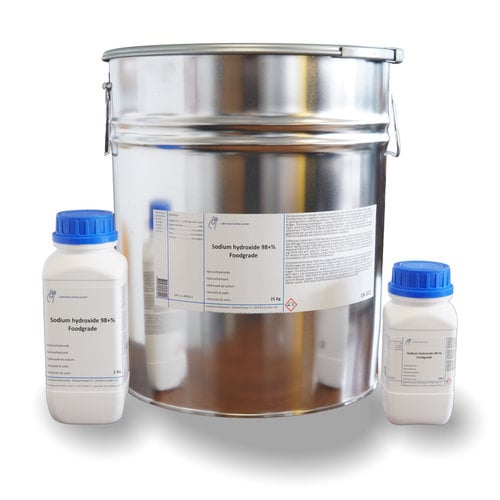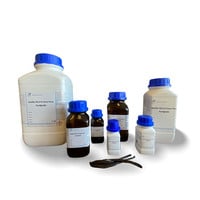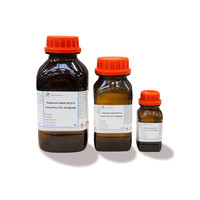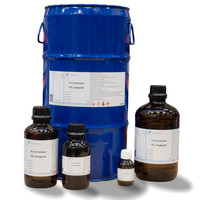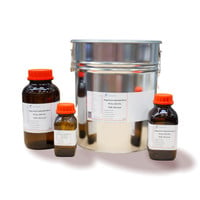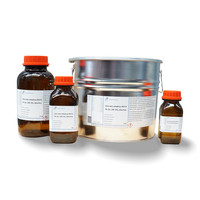You have no items in your shopping cart
Sodium Hydroxide 98+% Food Grade, E524
- Buy 6 and save 10%
Buy food grade sodium hydroxide?
If you are looking for sodium hydroxide that is food grade certified (E524), then you have come to the right place at Laboratoriumdiscounter. High quality sodium hydroxide for a friendly price and guaranteed food trade. Food grade sodium hydroxide has E number E524. Packed and sturdy food-safe packaging and delivered quickly.
What is Sodium Hydroxide?
Sodium hydroxide (NaOH) also known as caustic soda is a caustic hydroxide used in industry (mainly as a base, in the manufacture of paper, fabrics and detergents. In addition, it is used in the oil industry in the preparation of water-based drilling muds At the domestic level, its utilities are recognized for unclogging kitchen and bathroom drains, making homemade soap, etc. In the food industry, it is used as an additive in the preparation of various baked goods.
At room temperature, sodium hydroxide is an odorless white crystalline solid that absorbs moisture from the air (hygroscopic). It is a manufactured substance. When dissolved in water or neutralized with an acid, it releases a large amount of heat which may be sufficient to ignite combustible materials. Sodium hydroxide is very corrosive. It is generally used in solid form or as a 50% solution.
Sodium hydroxide is a highly corrosive base that breaks down proteins at normal room temperature and can cause severe chemical burns. It is very soluble in water and readily absorbs moisture and carbon dioxide from the air.
As one of the simpler hydroxides, sodium hydroxide is often used in combination with neutral water and hydrochloric acid to demonstrate the pH scale to chemistry students.
Sodium hydroxide is used in many industries: in pulp and paper manufacturing, textiles, drinking water, soaps and detergents, and as a drain cleaner.
What is Sodium Hydroxide used for?
Sodium hydroxide is used to make soap, crayons, paper, paint, and petroleum products. It is also used in cotton textile processing, washing and bleaching, oxide coating, electroplating and electrowinning. It is commonly found in plungers and oven cleaners. It is also used as a paint stripper and by furniture makers to remove old paint from wooden furniture.
It is used in the traditional preparation of table olive stew, especially in olive varieties such as manzanilla and gordal.
A solution of a small amount of soda diluted in water is used according to the traditional method to make regular margarine and a pretzel and also to make lutefisk, a traditional fish-based food from the Nordic countries.
What Safety Precautions Should I Take Before Using Chemicals?
It is always wise to work as safely as possible when working with chemicals. Even substances that do not seem dangerous at first can cause enormous damage if they get into your eyes. Therefore, always wear safety goggles. You also want to prevent chemicals from ending up on your skin, which is why it is important to always use good gloves or disposable gloves.
Respiratory protection is necessary for volatile substances, vaporous liquids and solids that dust. There are many different types of filters, so you should always refer to the MSDS to find out which filter you need. Many filters also specify which substances they are for.
In some cases it may be necessary to protect the whole body, in which case a plastic overall is needed, you can find it here.
When working with flammable and oxidizing substances, it is important to always have fire extinguishers and absorbents at hand. It is also useful to be able to clean up spills of aggressive chemicals immediately with absorbents and to dispose of them in accordance with international and/or local legislation.
If you need more information on how to handle a specific substance, always consult the safety data sheet. You can find this on the product page or request it via [email protected]
Technical data
Empirical formula NaOH
Molar mass (M) 40,0 g/mol
Density (D) 2,13 g/cm³
Boiling point (bp) 1388 °C
Melting point (mp) 323 °C
ADR 8 II
WGK 1
CAS No. 1310-73-2
EG-Nr. 215-185-5
UN-Nr. 1823
$$$$$
Hazard statements
H290 May be corrosive to metals
H314 Causes severe skin burns and eye damage
Precautionary statements
Precautionary statements - prevention
P233 Keep container tightly closed
P280 Wear protective gloves/eye protection
Precautionary statements - response
P303+P361+P353 IF ON SKIN (or hair): Take off immediately all contaminated clothing. Rinse skin
with water [or shower]
P305+P351+P338 IF IN EYES: Rinse cautiously with water for several minutes. Remove contact
lenses, if present and easy to do. Continue rinsing
P310 Immediately call a POISON CENTER/docto


